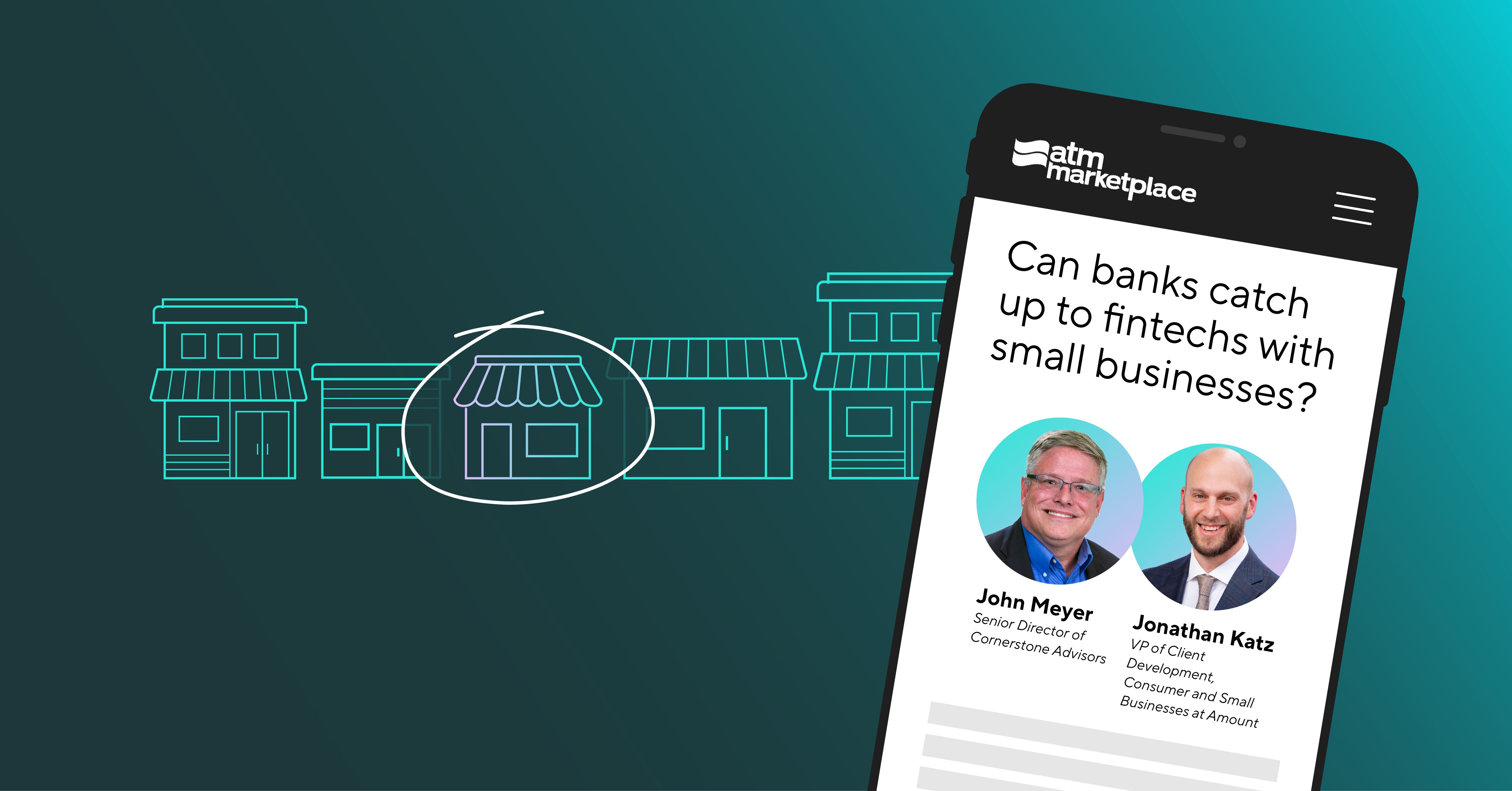
This is a reprint of an article that originally appeared on ATM Marketplace on December 27, 2022.
Over the years, there has been a significant amount of discourse into what role fintechs will play in the larger financial industry. Some have seen fintechs as rivals to banks, whereas others see the two as partners who can make up for each other's weaknesses.
However, this discussion often leaves out the types of customers that fintechs can target effectively: small to medium sized businesses. Banks are particularly vulnerable when it comes to this area, as fintechs are proactive in helping these businesses get capital on their own terms.
A study from banking technology provider Amount and Cornerstone Advisors entitled "Small business, big ambitions: How community banks can embrace the small business market," examined how banks are losing ground to fintechs in this market and how they can catch up.
One noteworthy data point was while the PPP increased the Small Business Administration lending pool from 1,300 to more than 4,700 banks, fewer than 600 banks have made small to medium sized business loans a major priority.
To learn more about this topic, ATM Marketplace interviewed John Meyer, senior director of Cornerstone Advisors, and Jonathan Katz, VP of client development, consumer and small businesses at Amount, via email.
Q. How are fintechs reaching SMB in a way traditional FIs aren't?
Meyer: Fintechs are intentionally targeting SMBs and most community banks don't operate in this way. Traditionally, community banks' bread and butter has been commercial real estate (CRE) loans and commercial and industrial (C&I) loans. We can also think about it this way: Fintechs target SMBs at the point where they need money, while community banks react to SMBs when they walk into the branch.
Katz: Fintechs are more proactive at trying to meet the SMBs where they need capital, whereas the banks are more reactive, and are really using the branch for the most part, which is for more inbound opportunities than outbound.
Q. When it comes to lending, what are the friction points that fintechs remove?
Meyer: They make the application process easier, and the auto decisioning faster.
Katz: Fintechs make the application process easier, and given they leverage a lot more data and analytics by way of auto-decisioning technology, they arrive at similar decisions faster.
Q. Can you expand on why identity verification is an issue in particular?
Meyer: You can see it regarding the PPP loan program, just the amount of fraud that exists and that can be perpetuated in the SMB space. For example, the ability to create fake business names, which increases the risk exponentially. The tools available broadly to the SMB marketplace aren't as robust as in the consumer space, so if you don't make it easy for SMB customers to navigate, they will go elsewhere — which is why we're seeing fintechs gaining a significant share of this market.
Katz: Abandonment in the online channel is very high when the requirements are onerous and then you run into the risk of a business going elsewhere for an easier experience. The digital process of confirming identity eases a lot of that friction.
Q. What are community banks doing to catch up?
Meyer: I think a lot of the traditional lines of making money are problematic with remote working, impacting CRE. So, many of our clients are now looking at alternative ways to find loan income.
Katz: They are looking at ways to be able to serve the smaller businesses on the capital side of the house, whereas traditionally they've looked to serve them on the deposit side of the house. We've seen the regulatory data show loans to SMBs over the last decade have been in decline for many banks that consider themselves community organizations.
Q. What should community banks be doing?
Meyer: What they should be doing is on the tech side, enhancing the tech capabilities that are available to them in the market, to reduce application friction, reduce times to adjudicate, and reach out to the customers where they are transacting in digital and embedded channels.
Katz: They need to adopt a new process for their decisioning and underwriting. These loans have to be decisioned much faster, and with less people, than commercial real loans.
Q. Can you share any additional insights from your report?
Meyer: CRE renewals remain questionable. High rates have dried up mortgage refinancing. Inflation and unemployment are making consumer lending, like auto, riskier. So, to grow, community banks need to look at segments they don't typically target: trusts or small business.
Katz: The community banks, specifically, need to innovate to remain relevant with customers and competitive with other banks and fintechs. They need to be able to move forward and adapt, or else run the risk of a lack of growth.

To learn more about how community banks can find success in the SMB marketplace, read the full report.
 Download Report
Download Report